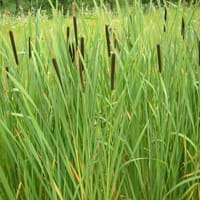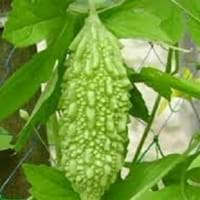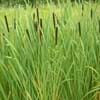Life Span
Perennial
Annual
Origin
World/Pandemic, North America, Caribbean, Europe, Northern Africa, Asia
North America, Mexico, Central America
Types
Not Available
Not Available
Number of Varieties
Not Available
Habitat
Boggy areas, Near ponds
Loamy soils, Moist Soils, Subtropical climates
USDA Hardiness Zone
2-12
5-7
Sunset Zone
21,22
A1, A2, A3, H1, H2, 1a, 1b, 2a, 2b, 3a, 3b, 4, 5, 6, 7, 8, 9, 10, 11, 12, 13, 14, 15, 16, 17, 18, 19, 20, 21, 22, 23, 24
Habit
Clump-Forming
Vining/Climbing
Flower Color
Sienna, Chocolate
Yellow, Orange, Dark Green
Flower Color Modifier
Not Available
Bicolor
Fruit Color
Not Available
Yellow, Dark Green
Leaf Color in Spring
Green
Green, Dark Green
Leaf Color in Summer
Green
Green, Dark Green
Leaf Color in Fall
Not Available
Green, Dark Green
Leaf Color in Winter
Green
Not Available
Leaf Shape
Grass like
Palmate
Plant Season
Summer, Fall
Summer, Fall
Sunlight
Full Sun, Partial Sun
Full Sun
Growth Rate
Fast
Very Fast
Type of Soil
Loam, Sand
Loam, Sand
The pH of Soil
Acidic, Neutral, Alkaline
Neutral
Soil Drainage
Poorly Drained
Well drained
Bloom Time
Summer
Indeterminate
Tolerances
Wet Site
Drought
Where to Plant?
Container, Ground
Ground
How to Plant?
Divison, Seedlings
Seedlings
Plant Maintenance
Medium
Medium
Watering Requirements
Does not require regular watering, Water Deeply
Keep ground moist, Requires regular watering
In Summer
Lots of watering
Lots of watering
In Spring
Moderate
Moderate
In Winter
Average Water
Average Water
Soil pH
Acidic, Neutral, Alkaline
Neutral
Soil Type
Loam, Sand
Loam, Sand
Soil Drainage Capacity
Poorly Drained
Well drained
Sun Exposure
Full Sun, Partial Sun
Full Sun
Pruning
Cut limbs, Remove damaged leaves, Remove dead branches, Remove dead leaves, Remove dead or diseased plant parts
Cut out old flower stalks, Prune after flowering, Remove dead or diseased plant parts
Fertilizers
All-Purpose Liquid Fertilizer, Apply 5-10-5 amounts, Apply N-P-K
Apply 10-10-10 amount, Apply 12-12-12 amounts, Nitrogen, Phosphate, Potassium
Pests and Diseases
Red blotch
Aphids, Army-worms, Bacteria wilt, Bacterial leaf spot, Blight, Cucumber beetles, Cutworms, Fusarium leaf spot, Red spider mite
Plant Tolerance
Wet Site
Drought, Full Sun, Salt and Soil Compaction
Flower Petal Number
Not Available
Single
Edible Fruit
Not Available
Yes
Foliage Texture
Coarse
Coarse
Foliage Sheen
Matte
Matte
Attracts
Birds
Bees, Flies, Flying insects
Allergy
Skin rash
Hypoglycaemic Coma, Irregular Heart Rhythm, Miscarriage
Aesthetic Uses
Ground Cover, Showy Purposes
Not Used For Aesthetic Purpose
Beauty Benefits
Not Available
Acne, For treating wrinkles, Improve hair condition, Nourishes scalp, Removes dandruff
Environmental Uses
Air purification, soil stabilisation
Food for animals, Insect Repellent
Medicinal Uses
anticoagulant, Astringent, Burns, Diuretic, Emmenagogue, Galactogogue, Haemostatic, Miscellany, Refrigerant, Sedative, Tonic, Vulnerary
Anti-fungal, Detoxification, Diabetes, Gastrointestinal disorders, Weight loss
Part of Plant Used
Flowers, Leaves, Root, Seeds, Stem
Fruits
Other Uses
Fibre, For making oil, used for weaving hats, Used in biomass, Used in paper industry, Weaving into Mats and Bags
Cosmetics, Repellent, Use in Chinese herbology
Used As Indoor Plant
No
No
Used As Outdoor Plant
Yes
Yes
Garden Design
Dried Flower/Everlasting, Water Gardens, Wildflower
Dried Flower/Everlasting, Vine
Botanical Name
TYPHA latifolia
CUCURBITA pepo 'Bicolor Pear'
Common Name
Broadleaf Cattail, Common Cattail
Bicolor Pear Gourd, Ornamental Gourd
In Hindi
Broadleaf Cattail
करेला
In German
Laub- Cattail
Bittermelone
In French
broadleaf Cattail
Momordica charantia
In Spanish
Espadaña de hoja ancha
Momordica charantia
In Greek
πλατύφυλλων Cattail
Not Available
In Portuguese
broadleaf Tifa
Momordica
In Polish
Broadleaf Cattail
Przepękla ogórkowata
In Latin
broadleaf Cattail
Not Available
Phylum
Magnoliophyta
Spermatophyta
Class
Liliopsida
Magnoliopsida
Family
Typhaceae
Cucurbitaceae
Clade
Angiosperms, Commelinids, Monocots
Not Available
Tribe
Not Available
Not Available
Subfamily
Pitcairnioideae
Cucurbitoideae
Number of Species
Not Available
Season and Care of Broadleaf Cattail and Bitter Gourd
Season and care of Broadleaf Cattail and Bitter Gourd is important to know. While considering everything about Broadleaf Cattail and Bitter Gourd Care, growing season is an essential factor. Broadleaf Cattail season is Summer and Fall and Bitter Gourd season is Summer and Fall. The type of soil for Broadleaf Cattail is Loam, Sand and for Bitter Gourd is Loam, Sand while the PH of soil for Broadleaf Cattail is Acidic, Neutral, Alkaline and for Bitter Gourd is Neutral.
Broadleaf Cattail and Bitter Gourd Physical Information
Broadleaf Cattail and Bitter Gourd physical information is very important for comparison. Broadleaf Cattail height is 182.88 cm and width 91.44 cm whereas Bitter Gourd height is 60.00 cm and width 90.00 cm. The color specification of Broadleaf Cattail and Bitter Gourd are as follows:
Broadleaf Cattail flower color: Sienna and Chocolate
Broadleaf Cattail leaf color: Green
Bitter Gourd flower color: Yellow, Orange and Dark Green
- Bitter Gourd leaf color: Green, Dark Green
Care of Broadleaf Cattail and Bitter Gourd
Care of Broadleaf Cattail and Bitter Gourd include pruning, fertilizers, watering etc. Broadleaf Cattail pruning is done Cut limbs, Remove damaged leaves, Remove dead branches, Remove dead leaves and Remove dead or diseased plant parts and Bitter Gourd pruning is done Cut out old flower stalks, Prune after flowering and Remove dead or diseased plant parts. In summer Broadleaf Cattail needs Lots of watering and in winter, it needs Average Water. Whereas, in summer Bitter Gourd needs Lots of watering and in winter, it needs Average Water.





